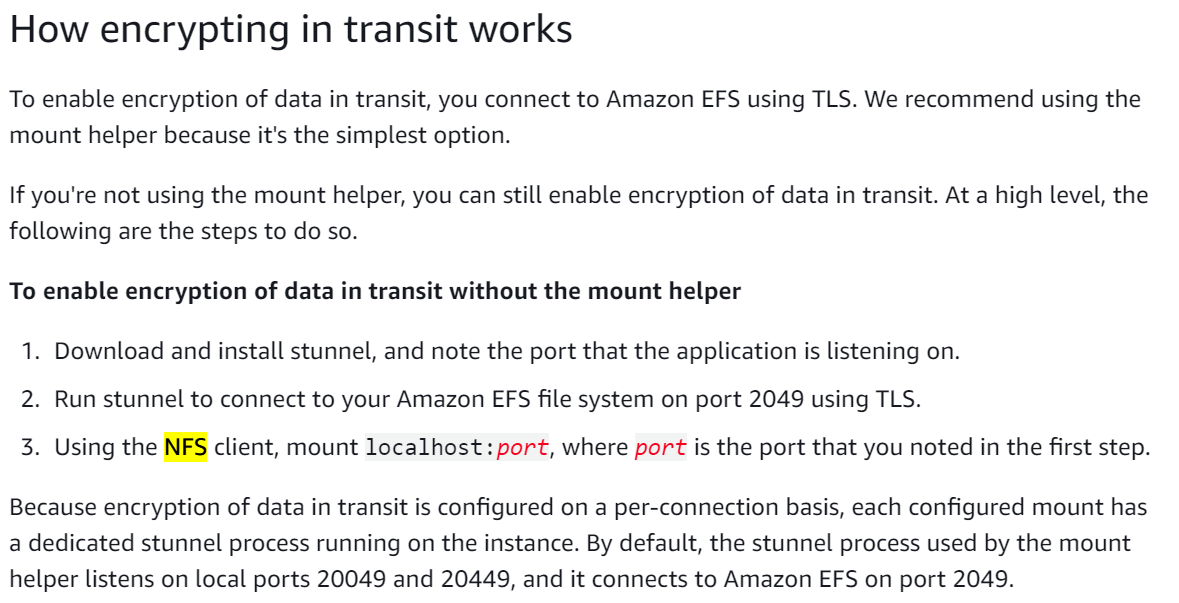Enable Encryption During Transit to AWS EFS
Question
You have created AWS EFS with default settings and mounted it on an EC2 instance.
Due to regulatory policies, your organization had asked you to encrypt data during transit to EFS.
What would you do to enable encryption during transit?
Answers
Explanations
Click on the arrows to vote for the correct answer
A. B. C. D.Answer: D.
You can encrypt data in transit using an Amazon EFS file system, without modifying your applications.
Enabling encryption of data in transit for your Amazon EFS file system is done by enabling Transport Layer Security (TLS) when you mount your file system using the Amazon EFS mount helper.
When encryption of data in transit is declared as a mount option for your Amazon EFS file system, the mount helper initializes a client stunnel process.
Stunnel is an open-source multipurpose network relay.
The client stunnel process listens on a local port for inbound traffic, and the mount helper redirects Network File System (NFS) client traffic to this local port.
Option A is incorrect because NFS protocol is not provided by default.
Options B and C are incorrect.
Encryption during transit is not an option on EFS during or after creation.
Reference:
https://docs.aws.amazon.com/efs/latest/ug/encryption-in-transit.html
The correct answer is D. Encryption during transit can be enabled when mounting the file system using the Amazon EFS mount helper. The mount helper uses TLS version 1.2 to communicate with the file system.
AWS Elastic File System (EFS) provides a simple, scalable, fully managed file storage service for use with Amazon EC2 instances. It uses the Network File System (NFS) protocol for file access, which provides file-level access to shared data.
When you mount an EFS file system on an EC2 instance, all data transmitted between the EC2 instance and the EFS file system is sent over the network. By default, the data is not encrypted, but there is a way to enable encryption during transit.
To enable encryption during transit to EFS, you can use the Amazon EFS mount helper. The mount helper is a set of scripts and utilities that simplifies the mounting of EFS file systems on Amazon EC2 instances. It provides support for encryption of data in transit using Transport Layer Security (TLS) version 1.2.
To enable encryption during transit, you need to mount the EFS file system using the Amazon EFS mount helper with the appropriate options. You can do this by specifying the tls mount option in the mount command, like this:
javascriptsudo mount -t efs -o tls fs-12345678:/ /mnt/efs When you specify the tls mount option, the Amazon EFS mount helper uses TLS version 1.2 to encrypt data in transit between the EC2 instance and the EFS file system. The data is decrypted on the other side of the connection and stored in the EFS file system in its unencrypted form.
It is important to note that enabling encryption during transit only encrypts the data in transit between the EC2 instance and the EFS file system. It does not encrypt the data at rest in the EFS file system. To encrypt the data at rest, you can use the EFS encryption feature or encrypt the data before storing it in the EFS file system.